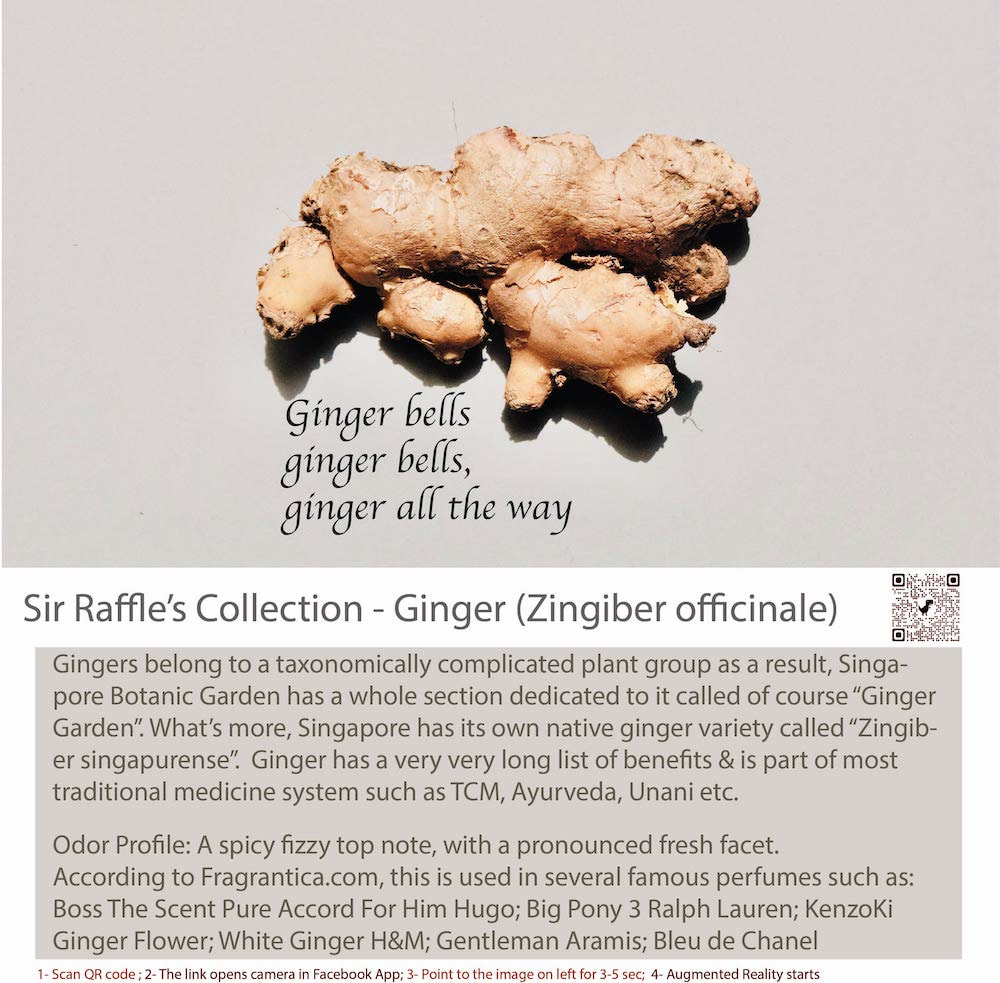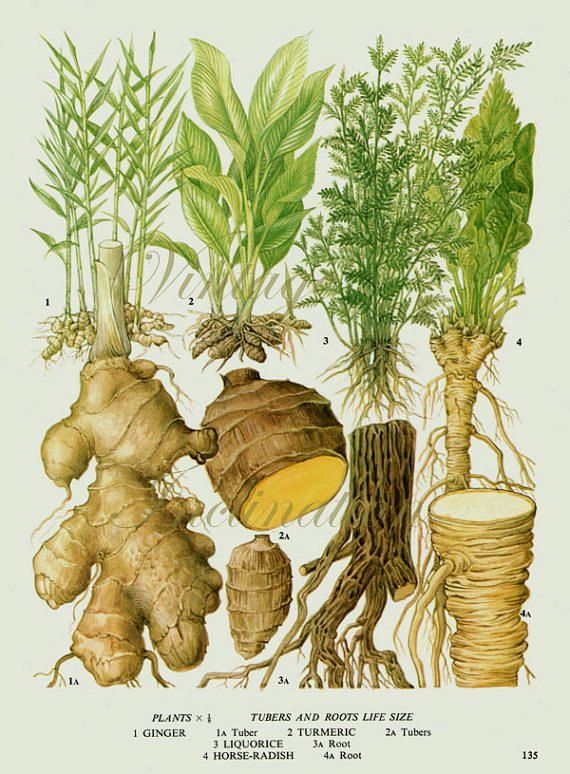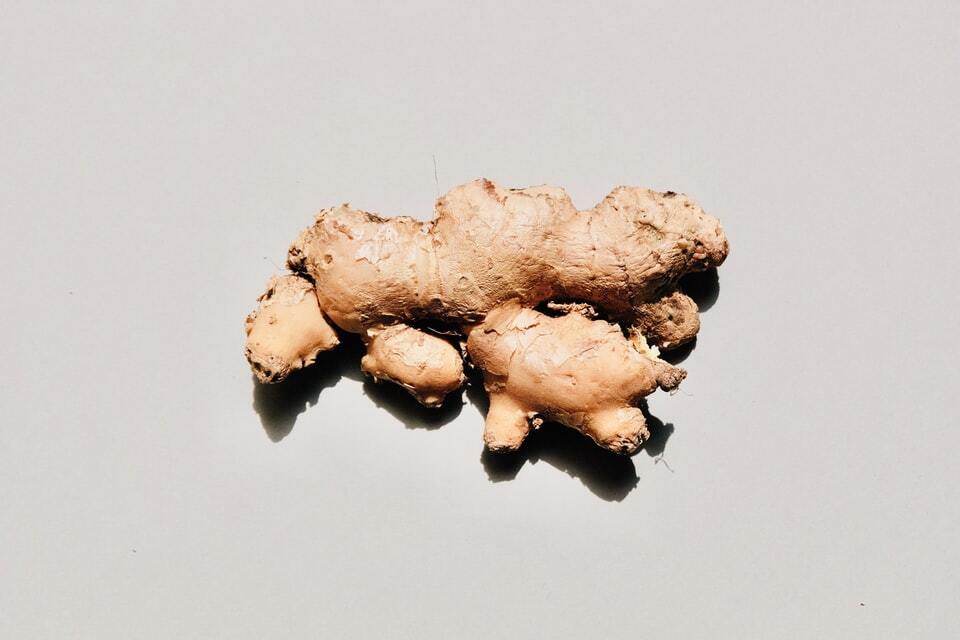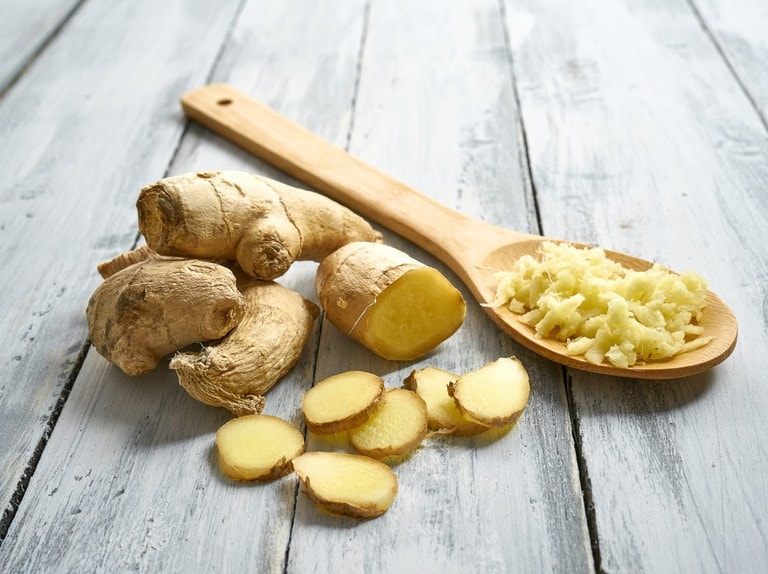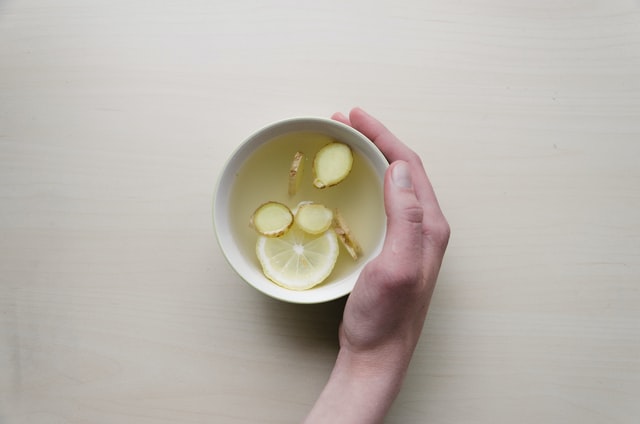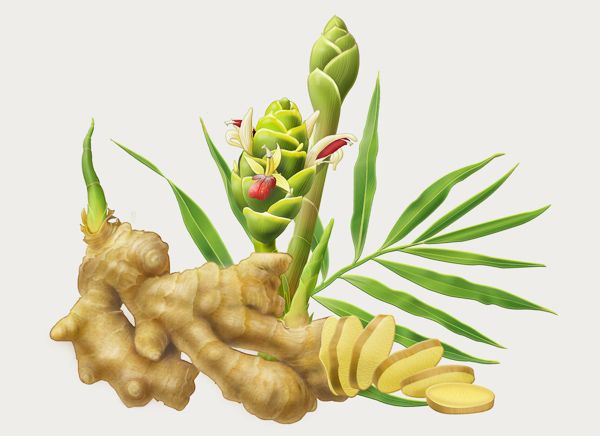Explore the Aromatic World of Ginger Scent
Ginger: A Spice with a Rich Culinary, Medicinal, and Aromatic Heritage
Ginger, scientifically known as Zingiber officinale, is a widely revered spice with a long and storied history. Believed to have originated in Southeast Asia, ginger has been cultivated and cherished for its unique flavor, medicinal properties, and aromatic allure for thousands of years. This versatile rhizome has left an indelible mark on cuisines, traditional medicine systems, and perfumery around the world.
Historical Significance: Ginger's use dates back to ancient times, with records of its cultivation in ancient China and India over 5,000 years ago. It was highly regarded by ancient Indian and Chinese civilizations for its medicinal properties and was traded along the famed Silk Road that connected Asia with the Mediterranean region.
Culinary Marvel: Ginger's unmistakable flavor is warm, pungent, and slightly sweet with citrus undertones. Its versatility makes it a staple in a wide array of culinary delights. It is widely used in Asian, Indian, Middle Eastern, and Caribbean cuisines to add depth and complexity to dishes. Ginger can be used fresh, dried, or in powdered form, and it is an essential ingredient in savory dishes, desserts, beverages, and even confections.
Medicinal and Therapeutic Uses: Ginger has been treasured in traditional medicine systems for its potential health benefits. Some of its key therapeutic properties include:
Aromatic Delight in Perfumery: Ginger's aromatic charm has not gone unnoticed in the world of perfumery. The essential oil derived from ginger possesses a warm, spicy, and slightly woody fragrance that adds depth and complexity to fragrances. It is often used as a middle note to create a rich and captivating aroma. In perfumery, ginger blends well with various other essential oils, including citrus, floral, and woody notes, adding a touch of warmth and sophistication to the overall fragrance composition.
Therapeutic Oils and Aromatherapy: Ginger essential oil is also valued in aromatherapy for its soothing and invigorating effects. Its warm and comforting scent can help promote relaxation, reduce stress, and uplift the spirit. In massage oils and diffuser blends, ginger essential oil can provide a rejuvenating and revitalizing experience.
Modern Applications: Ginger's enduring popularity continues to thrive in the modern era. It is found in a wide range of products, including herbal teas, health supplements, beauty products, and even ginger-infused beverages. Ginger has become a cherished ingredient in various cuisines worldwide and is celebrated for its health-promoting attributes.
Ginger's rich and diverse heritage as a culinary delight, medicinal treasure, aromatic marvel, and therapeutic wonder makes it a truly exceptional spice. From ancient civilizations to contemporary kitchens and perfumery, ginger's warm and inviting essence has captured the hearts and palates of people across the globe. As we continue to explore its culinary, aromatic, and medicinal potential, ginger remains an esteemed and beloved spice that enriches our lives in more ways than one.
Ginger, scientifically known as Zingiber officinale, is a widely revered spice with a long and storied history. Believed to have originated in Southeast Asia, ginger has been cultivated and cherished for its unique flavor, medicinal properties, and aromatic allure for thousands of years. This versatile rhizome has left an indelible mark on cuisines, traditional medicine systems, and perfumery around the world.
Historical Significance: Ginger's use dates back to ancient times, with records of its cultivation in ancient China and India over 5,000 years ago. It was highly regarded by ancient Indian and Chinese civilizations for its medicinal properties and was traded along the famed Silk Road that connected Asia with the Mediterranean region.
Culinary Marvel: Ginger's unmistakable flavor is warm, pungent, and slightly sweet with citrus undertones. Its versatility makes it a staple in a wide array of culinary delights. It is widely used in Asian, Indian, Middle Eastern, and Caribbean cuisines to add depth and complexity to dishes. Ginger can be used fresh, dried, or in powdered form, and it is an essential ingredient in savory dishes, desserts, beverages, and even confections.
Medicinal and Therapeutic Uses: Ginger has been treasured in traditional medicine systems for its potential health benefits. Some of its key therapeutic properties include:
- Digestive Aid: Ginger is well-known for its ability to alleviate digestive discomfort and promote healthy digestion.
- Anti-Inflammatory: The rhizome possesses potent anti-inflammatory properties that can aid in reducing inflammation in the body.
- Nausea Relief: Ginger has long been used as a natural remedy for motion sickness, morning sickness during pregnancy, and postoperative nausea.
- Immune Booster: It is rich in antioxidants and may help boost the immune system's defenses.
- Pain Relief: Ginger's anti-inflammatory properties may also help in reducing muscle and joint pain.
Aromatic Delight in Perfumery: Ginger's aromatic charm has not gone unnoticed in the world of perfumery. The essential oil derived from ginger possesses a warm, spicy, and slightly woody fragrance that adds depth and complexity to fragrances. It is often used as a middle note to create a rich and captivating aroma. In perfumery, ginger blends well with various other essential oils, including citrus, floral, and woody notes, adding a touch of warmth and sophistication to the overall fragrance composition.
Therapeutic Oils and Aromatherapy: Ginger essential oil is also valued in aromatherapy for its soothing and invigorating effects. Its warm and comforting scent can help promote relaxation, reduce stress, and uplift the spirit. In massage oils and diffuser blends, ginger essential oil can provide a rejuvenating and revitalizing experience.
Modern Applications: Ginger's enduring popularity continues to thrive in the modern era. It is found in a wide range of products, including herbal teas, health supplements, beauty products, and even ginger-infused beverages. Ginger has become a cherished ingredient in various cuisines worldwide and is celebrated for its health-promoting attributes.
Ginger's rich and diverse heritage as a culinary delight, medicinal treasure, aromatic marvel, and therapeutic wonder makes it a truly exceptional spice. From ancient civilizations to contemporary kitchens and perfumery, ginger's warm and inviting essence has captured the hearts and palates of people across the globe. As we continue to explore its culinary, aromatic, and medicinal potential, ginger remains an esteemed and beloved spice that enriches our lives in more ways than one.
To experience augmented reality, please open the Facebook-app using QR code and point to the image below
Crafting Exquisite Scents with Healthy Woody Fragrance
Ginger originated in Southeast Asia and it amongst the healthiest spices on the planet. It belongs to the Zingiberaceae family, which is closely related to turmeric, cardamom, and galangal. The underground part of the stem is the part commonly used as a spice.
Ginger (Zingiber officinale) is a plant that is native to Southeast Asia and is widely used in cooking and traditional medicine. Sir Stamford Raffles, who is also known as Sir Thomas Stamford Bingley Raffles, was a British statesman and founder of Singapore. In 1819, he established a British colony in Singapore, and played a major role in the development of Singapore as a major trading port in Southeast Asia.
Ginger is likely to have been present in Singapore during the time of Sir Raffles, as it is a popular herb in Southeast Asian cuisine. It is possible that ginger was also used for medicinal purposes by the local population. Singapore was a major port city and a hub for trade, it's likely that ginger was one of the spices that were traded through the port.
Sir Raffles himself wrote about the importance of the spice trade in Singapore, and how it was one of the main drivers of the colony's economy. He also established the Singapore Botanic Gardens in 1822, which aimed to promote scientific research and the cultivation of plants, including ginger.
It is worth noting that Ginger is not native to Singapore but it is widely cultivated and used in the Southeast Asian region, and Singapore as a major port in the region likely had access to the spice.
Ginger (Zingiber officinale) is a plant that is native to Southeast Asia and is widely used in cooking and traditional medicine. Sir Stamford Raffles, who is also known as Sir Thomas Stamford Bingley Raffles, was a British statesman and founder of Singapore. In 1819, he established a British colony in Singapore, and played a major role in the development of Singapore as a major trading port in Southeast Asia.
Ginger is likely to have been present in Singapore during the time of Sir Raffles, as it is a popular herb in Southeast Asian cuisine. It is possible that ginger was also used for medicinal purposes by the local population. Singapore was a major port city and a hub for trade, it's likely that ginger was one of the spices that were traded through the port.
Sir Raffles himself wrote about the importance of the spice trade in Singapore, and how it was one of the main drivers of the colony's economy. He also established the Singapore Botanic Gardens in 1822, which aimed to promote scientific research and the cultivation of plants, including ginger.
It is worth noting that Ginger is not native to Singapore but it is widely cultivated and used in the Southeast Asian region, and Singapore as a major port in the region likely had access to the spice.
Discover Natural Aromatherapy Ingredients at Scentopia Singapore
Ginger originated from Southeast Asia and does not exist in its wild state. The most ancient evidence of its domestication is among the Austronesian peoples where it was cultivated since ancient times.
Ginger was carried with them in their voyages during the Austronesian expansion, starting from around 3,000 BC. They introduced it to the Pacific Islands in prehistory, long before any contact with other civilizations. They presumably introduced it to India along with other Southeast Asian food plants and Austronesian sailing technologies, during early contact by Austronesian sailors with the Dravidian-speaking peoples of Sri Lanka and South India at around 1,500 BC. It was also carried by Austronesian voyagers into Madagascar and the Comoros in the 1st millennium CE.
Ginger (Zingiber officinale) is a plant that is widely used in traditional medicine, both in traditional Chinese medicine (TCM) and Ayurveda. The root of the ginger plant is used for medicinal purposes. Some of the therapeutic uses of ginger in traditional medicine include:
It's important to note that while ginger has a long history of use in traditional medicine, more research is needed to determine its effectiveness and safety.
Ginger was carried with them in their voyages during the Austronesian expansion, starting from around 3,000 BC. They introduced it to the Pacific Islands in prehistory, long before any contact with other civilizations. They presumably introduced it to India along with other Southeast Asian food plants and Austronesian sailing technologies, during early contact by Austronesian sailors with the Dravidian-speaking peoples of Sri Lanka and South India at around 1,500 BC. It was also carried by Austronesian voyagers into Madagascar and the Comoros in the 1st millennium CE.
Ginger (Zingiber officinale) is a plant that is widely used in traditional medicine, both in traditional Chinese medicine (TCM) and Ayurveda. The root of the ginger plant is used for medicinal purposes. Some of the therapeutic uses of ginger in traditional medicine include:
- Digestive aid: Ginger is believed to help with digestion and may be used to relieve stomach aches, gas, and bloating. It is also used as a carminative, which means it helps to expel gas from the intestines.
- Anti-inflammatory: Ginger has anti-inflammatory properties and may be used to reduce inflammation and swelling in conditions such as arthritis and eczema.
- Analgesic: Ginger can also be used as a natural pain reliever and is often used to alleviate headaches and menstrual cramps.
- Anti-nausea: Ginger is also known to have anti-nausea properties and is used to prevent and treat nausea and vomiting caused by chemotherapy, pregnancy, and motion sickness.
- Cardiovascular health: The root of ginger is known to have a positive impact on cardiovascular health, it helps in reducing the cholesterol level, blood pressure and also prevents blood clots.
It's important to note that while ginger has a long history of use in traditional medicine, more research is needed to determine its effectiveness and safety.
Unveiling the Unique Notes of Ginger Aroma Compounds
From India, it was carried by traders into the Middle East and the Mediterranean by around the 1st century CE. Ginger was introduced to the Mediterranean by the Arabs, and described by writers like Dioscorides (40–90 AD) and Pliny the Elder (24–79 AD). In 150 AD, Ptolemy noted that ginger was produced in Ceylon (Sri Lanka). Raw and preserved ginger was imported into Europe during the Middle Ages. In 14th century England, a pound of ginger cost as much as a sheep.
The first written records are not from Europe. These are from China! Confucius in China during 475–221 BC wrote about ginger and he was said to eat ginger with every meal. In 406 AD, the monk Faxian wrote that ginger was grown in pots and carried on Chinese ships to prevent scurvy. Later, during the Song Dynasty (960–1279), ginger started to be imported into China from southern countries.
The aroma of ginger can be described as warm, spicy, and pungent. The essential oil of ginger is obtained by steam distillation of the dried root and it is composed mainly of:
The first written records are not from Europe. These are from China! Confucius in China during 475–221 BC wrote about ginger and he was said to eat ginger with every meal. In 406 AD, the monk Faxian wrote that ginger was grown in pots and carried on Chinese ships to prevent scurvy. Later, during the Song Dynasty (960–1279), ginger started to be imported into China from southern countries.
The aroma of ginger can be described as warm, spicy, and pungent. The essential oil of ginger is obtained by steam distillation of the dried root and it is composed mainly of:
- Zingiberene: a sesquiterpene that imparts a spicy, woody aroma to the essential oil of ginger.
- β-Sesquiphellandrene: a terpene that imparts a spicy, woody and fresh aroma to the essential oil of ginger.
- Zingiberol: a sesquiterpene alcohol that imparts a spicy, woody aroma with a hint of sweetness to the essential oil of ginger
- B-bisabolene: a sesquiterpene that imparts a fresh, woody aroma with a hint of spices to the essential oil of ginger
- Curcumene: a terpene that imparts a spicy, woody aroma with a hint of lemon to the essential oil of ginger
The Essence of Woody Scent: A Fragrance Journey
The fragrance and flavor of ginger comes from volatile oils primarily consisting of zingerone, shogaols, and gingerols with [6]-gingerol (1-[4'-hydroxy-3'-methoxyphenyl]-5-hydroxy-3-decanone) as the major pungent compound. These are usually about 1-3% of total weight.
Zingerone is produced from gingerols during drying, having lower pungency and a spicy-sweet aroma. Shogaols are more pungent and have higher antioxidant activity but not found in raw ginger, but is formed from gingerols during heating, storage or via acidity.
Fresh ginger also contains an enzyme zingibain which is a cysteine protease and has similar properties to rennet.
Ginger is a popular ingredient in perfumery due to its warm, spicy, and pungent aroma. The essential oil of ginger is used to add depth and complexity to fragrances, and can be used in a variety of perfume types, including floral, oriental, and spicy fragrances. Some famous perfumes that feature ginger as a note include:
Zingerone is produced from gingerols during drying, having lower pungency and a spicy-sweet aroma. Shogaols are more pungent and have higher antioxidant activity but not found in raw ginger, but is formed from gingerols during heating, storage or via acidity.
Fresh ginger also contains an enzyme zingibain which is a cysteine protease and has similar properties to rennet.
Ginger is a popular ingredient in perfumery due to its warm, spicy, and pungent aroma. The essential oil of ginger is used to add depth and complexity to fragrances, and can be used in a variety of perfume types, including floral, oriental, and spicy fragrances. Some famous perfumes that feature ginger as a note include:
- Jo Malone Ginger Biscuit: This fragrance features ginger as a top note, paired with notes of lemon, orange, and gingerbread.
- Tom Ford Black Orchid: This perfume features ginger as a middle note, paired with notes of black truffle, ylang-ylang, and patchouli.
- Le Labo Ginger Ylang Ylang: This fragrance features ginger as a top note, paired with notes of ylang-ylang, mandarin, and cedarwood.
- Dior J'adore Absolu: This perfume features ginger as a middle note, paired with notes of jasmine, rose, and patchouli.
- Jo Malone Peony & Blush Suede: This fragrance features ginger as a middle note, paired with notes of peony, rose, and suede.
Elevate Your Fragrance Creations with Scent Materials
Ginger Benefits:
1- Helps to fight the flu and common cold - Gingerol has powerful anti-inflammatory and antioxidant effects, according to research. For instance, it may help reduce oxidative stress, which is the result of having an excess amount of free radicals in the body.
2- Can treat many forms of nausea, especially morning sickness- According to a review of 12 studies that included a total of 1,278 pregnant women, 1.1–1.5 grams of ginger can significantly reduce symptoms of nausea.
3- May help with weight loss- A 2016 study of 80 women with obesity found that ginger could also help reduce body mass index (BMI) and blood insulin levels. High blood insulin levels are associated with obesity. The evidence in favor of ginger’s role in helping prevent obesity is stronger in animal studies. Rats and mice who consumed ginger water or ginger extract consistently saw decreases in their body weight, even in instances where they’d also been fed high-fat diets.
4- Can help with osteoarthritis- Study participants received between 500 milligrams (mg) and 1 gram of ginger each day for anywhere from 3 to 12 weeks. A majority of them had been diagnosed with OA of the knee.
5- May drastically lower blood sugars and improve heart disease risk factors- There was also a 28% reduction in the Apolipoprotein B/ApolipoproteinA-I ratio and a 23% reduction in malondialdehyde (MDA), which is a byproduct of oxidative stress. A high ApoB/ApoA-I ratio and high MDA levels are both major risk factors for heart disease. Please note that this was a small study.
6- Can help treat chronic indigestion
7- May significantly reduce menstrual pain- The three groups received four daily doses of either ginger powder (250 mg), mefenamic acid (250 mg), or ibuprofen (400 mg). Ginger managed to reduce pain as effectively as the two NSAIDs
8- May help lower cholesterol levels- In a 2018 study of 60 people with hyperlipidemia, the 30 people who received 5 grams of ginger-pasted powder each day saw their LDL (bad) cholesterol levels drop by 17.4% over a 3-month period.
9- Contains a substance that may help prevent cancer- In a 28-day study of individuals at normal risk for colorectal cancer, 2 grams of ginger extract per day significantly reduced pro-inflammatory signaling molecules in the colon
10- May improve brain function and protect against Alzheimer’s disease
11- Can help fight infections- According to a 2008 study, it’s very effective against the oral bacteria linked to gingivitis and periodontitis. These are both inflammatory gum diseases
1- Helps to fight the flu and common cold - Gingerol has powerful anti-inflammatory and antioxidant effects, according to research. For instance, it may help reduce oxidative stress, which is the result of having an excess amount of free radicals in the body.
2- Can treat many forms of nausea, especially morning sickness- According to a review of 12 studies that included a total of 1,278 pregnant women, 1.1–1.5 grams of ginger can significantly reduce symptoms of nausea.
3- May help with weight loss- A 2016 study of 80 women with obesity found that ginger could also help reduce body mass index (BMI) and blood insulin levels. High blood insulin levels are associated with obesity. The evidence in favor of ginger’s role in helping prevent obesity is stronger in animal studies. Rats and mice who consumed ginger water or ginger extract consistently saw decreases in their body weight, even in instances where they’d also been fed high-fat diets.
4- Can help with osteoarthritis- Study participants received between 500 milligrams (mg) and 1 gram of ginger each day for anywhere from 3 to 12 weeks. A majority of them had been diagnosed with OA of the knee.
5- May drastically lower blood sugars and improve heart disease risk factors- There was also a 28% reduction in the Apolipoprotein B/ApolipoproteinA-I ratio and a 23% reduction in malondialdehyde (MDA), which is a byproduct of oxidative stress. A high ApoB/ApoA-I ratio and high MDA levels are both major risk factors for heart disease. Please note that this was a small study.
6- Can help treat chronic indigestion
7- May significantly reduce menstrual pain- The three groups received four daily doses of either ginger powder (250 mg), mefenamic acid (250 mg), or ibuprofen (400 mg). Ginger managed to reduce pain as effectively as the two NSAIDs
8- May help lower cholesterol levels- In a 2018 study of 60 people with hyperlipidemia, the 30 people who received 5 grams of ginger-pasted powder each day saw their LDL (bad) cholesterol levels drop by 17.4% over a 3-month period.
9- Contains a substance that may help prevent cancer- In a 28-day study of individuals at normal risk for colorectal cancer, 2 grams of ginger extract per day significantly reduced pro-inflammatory signaling molecules in the colon
10- May improve brain function and protect against Alzheimer’s disease
11- Can help fight infections- According to a 2008 study, it’s very effective against the oral bacteria linked to gingivitis and periodontitis. These are both inflammatory gum diseases
Join Scentopia, Sentosa's latest tourist attraction wonderful orchid scent crafting, fragrance tour, bridal shower or corporate team building which includes perfume making onsite and offsite, beach activities and more. We also serve primary school learning journey, secondary students and pupil on industrial excursions. Know more about our orchids perfume bar or therapeutic orchid scents and other wellness aromas. Conatct Perfume workshop or book a scent crafting session here.

